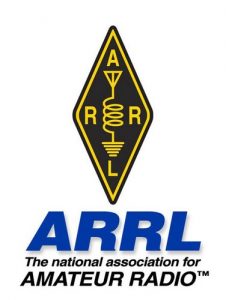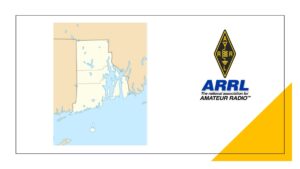What is ham radio?
Amateur Radio (ham radio) is a popular hobby and service that brings people, electronics and communication together. People use ham radio to talk across town, around the world, or even into space, all without the Internet or cell phones. It’s fun, social, educational, and can be a lifeline during times of need.
You can set up a ham radio station anywhere: in a car, on a bicycle, in a boat, or in a tent while camping. You can make contact with astronaut-hams aboard the International Space Station. You can use a small, handheld radio and communicate for hundreds of miles through repeater stations. You can also become a part of a cadre of trained emergency communications operators in your area. If you’re a tinkerer or a part of the “Maker” movement Amateur Radio is just the thing. The possibilities are endless!
Although Amateur Radio operators get involved for many reasons, they all have in common a basic knowledge of radio technology and operating principles, and pass an examination for the FCC license to operate on radio frequencies known as the “Amateur Bands.” These bands are radio frequencies allocated by the Federal Communications Commission (FCC) for use by ham radio operators. Since 1991, proficiency in Morse code is not a requirement for a license. You can get getting started today studying for your Technician License exam using the helpful study guides provided to the community for free by HamStudy.org.
How can I find out more
The best way to learn about Amateur Radio is to talk to hams in your community, or at public events like the annual ARRL Field Day. This June 2023, five RI affiliated clubs participated in Field Day. See Field Day for posts from BVARC (Blackstone Valley Amateur Radio Club); W1OP (The Providence Radio Association); Fidelity Amateur Radio Club; WA1USA (RICOMU); and NCRC (Newport County Radio Club).
Field Day is ham radio’s open house. Every June, more than 40,000 hams throughout North America set up temporary transmitting stations in public places to demonstrate ham radio’s science, skill and service to our communities and our nation. It combines public service, emergency preparedness, community outreach, and technical skills all in a single event. Field Day has been an annual event since 1933, and remains the most popular event in ham radio.
Parks on the Air (POTA) is another way to see hams in action in a state park near you.
Ham radio operators take pride in their ability to teach newcomers the ropes to get them started in the hobby. There is probably an Amateur Radio club near you that will welcome your interest.
In Rhode Island, you may contact a specific club near you or email your newly-elected RI Section Manager: Nancy Austin, KC1NEK
Email: [email protected]
ARRL—The national association for Amateur Radio™
 Founded in 1914, the American Radio Relay League is the national association for amateur radio™ in the US. Today, with more than 161,000 members, ARRL is the largest organization of radio amateurs in the United States and the primary source of information about what is going on in the ham radio world. ARRL offers books, news, support, information, special operating events, continuing education classes and other benefits for its members. Being a member of ARRL is a huge benefit for hams.
Founded in 1914, the American Radio Relay League is the national association for amateur radio™ in the US. Today, with more than 161,000 members, ARRL is the largest organization of radio amateurs in the United States and the primary source of information about what is going on in the ham radio world. ARRL offers books, news, support, information, special operating events, continuing education classes and other benefits for its members. Being a member of ARRL is a huge benefit for hams.
As a member of the ARRL, here are some of the benefits you will enjoy:
- QST Magazine – your monthly membership journal
- Online Services –
- QST online monthly digital edition
- QST Archive and Periodical Search
- Product Review Archive
- Email forwarding
- E-Newsletters – delivered to your inbox
- A voice in the affairs of ARRL and ham radio through locally appointed volunteers
- Publication Specials and on-line course discounts
- Emergency Communication Services
- Technical and Regulatory Information Services
- Operating Awards
- Ham Radio Equipment Insurance Plan Available
- Outgoing Foreign QSL Service
- Plus much more!
Local and regional operational activities of the American Radio Relay League are carried out through its Field Organization. The organization divides the 15 Divisions into 71 separate geographic regions called Sections. Each Section has a similar team of one elected, volunteer Section Manager and several volunteer positions. Section Managers are elected by the members living within the section for a two-year term. The Section Manager appoints a team of volunteers. A Section Manager may optionally appoint one or more Assistant Section Managers.
About the Rhode Island ARRL Section
 The Rhode Island field organization serves some 500 ARRL members who live and work in the state of Rhode Island. We are a welcoming community of experienced amateurs and affiliated radio clubs here to help all stakeholders to the best of our abilities. This website launched July 5, 2023 to support increased communication and collaboration among all hams operating across the 39 municipalities that are grouped into five historic counties in our small but mighty Ocean State.
The Rhode Island field organization serves some 500 ARRL members who live and work in the state of Rhode Island. We are a welcoming community of experienced amateurs and affiliated radio clubs here to help all stakeholders to the best of our abilities. This website launched July 5, 2023 to support increased communication and collaboration among all hams operating across the 39 municipalities that are grouped into five historic counties in our small but mighty Ocean State.
How do you see yourself helping Amateur Radio in RI in 2023?
Why is it called “ham radio”?
Ham: a poor operator; a ‘plug’ (G. M. Dodge; The Telegraph Instructor)
The first wireless operators were landline telegraphers who left their offices to go to sea or to staff the coastal stations. They brought with them their language and much of the tradition of their older profession. In those early days, every station occupied the whole spectrum with its broad spark signal. Government stations, ships, coastal stations and the increasingly numerous amateur operators all competed for time and signal supremacy in each other’s receivers. Many of the amateur stations were very powerful. Two amateurs, working each other across town, could effectively jam all the other operations in the area. Frustrated commercial operators would refer to the ham radio interference by calling them “hams.” Amateurs, possibly unfamiliar with the real meaning of the term, picked it up and applied it to themselves. As the years advanced, the original meaning has completely disappeared. [ARRL Web]
Interested in visiting the “oldest surviving, originally equipped wireless station anywhere“?
You are in luck! The New England Wireless & Steam Museum in East Greenwich, RI “preserves the original 1907 Massie coastal wireless station which was moved from Point Judith, Rhode Island. This station is the oldest surviving, originally equipped wireless station anywhere. ” Join them Saturday July 22, 2023 9am-3pm for a Radio Tune-Up Flea Market “featuring all kinds of antique and modern radios”. For more information see: https://newsm.org/wireless/
See Also
❖ Introduction to Amateur Radio (Wikipedia)
❖ Ham Radio History
❖ FCC Part 97
❖ Find a Club Near You
❖ Find an Amateur Radio Exam in Your Area
❖ Start studying for free on HamStudy.org
❖ Join the ARRL



















